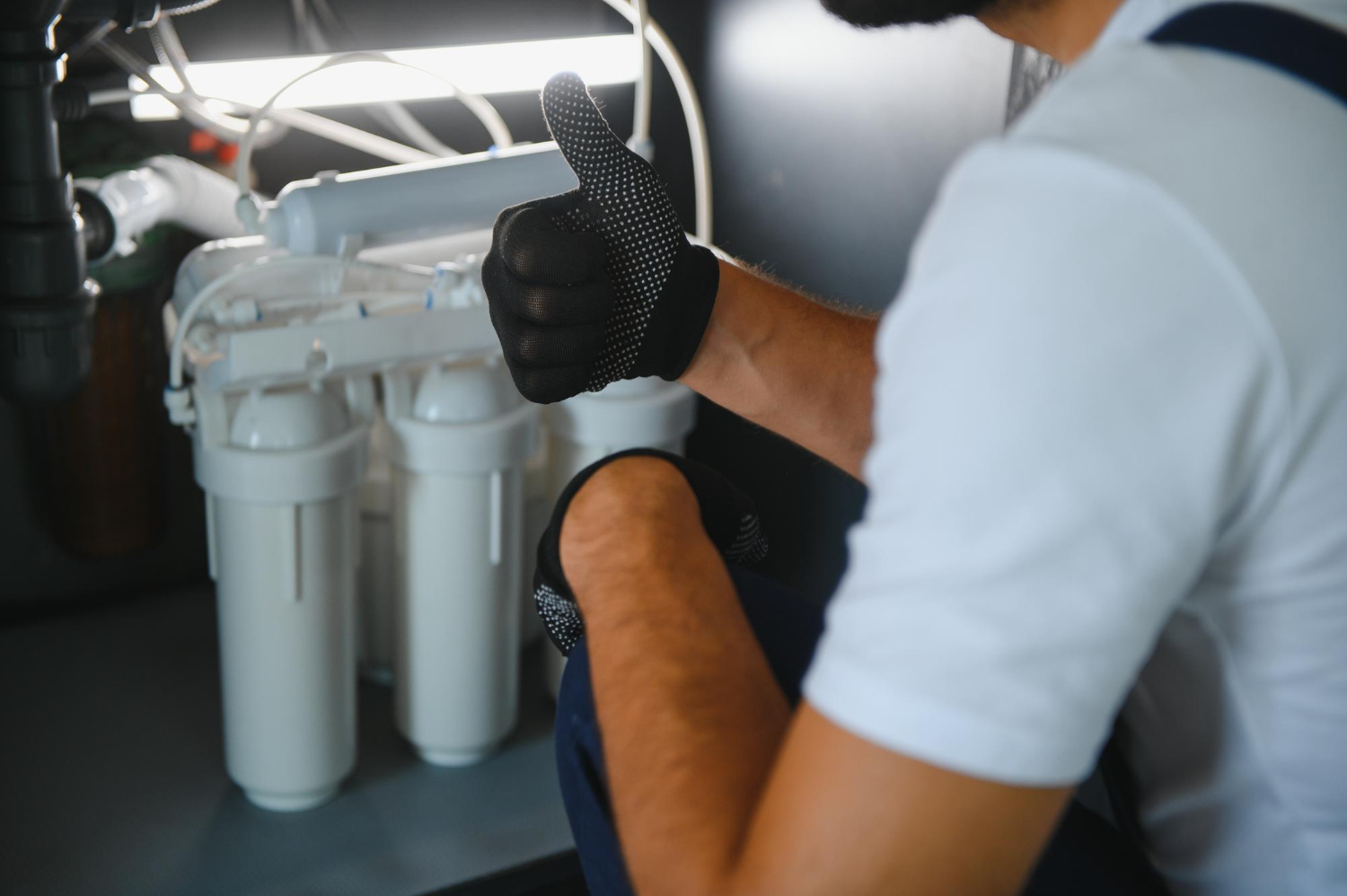Many homeowners assume their whole house water filter only needs attention when problems arise, but neglecting timely replacement can slowly impact water quality, plumbing efficiency, and even your family’s health.
Spring is the perfect time to check your water filtration system, clear out winter buildup, and ensure your entire home is getting the cleanest water possible.
A 2023 study by the Water Quality Association found that 83% of American homeowners were concerned about the quality of their tap water, yet fewer than half replaced their home filters on time.
In this article, we’ll break down how whole house systems work, when and how to replace your filters, and what to look for when buying new cartridges. Whether you’re new to filter maintenance or just want to streamline your routine, this guide will help you stay ahead:
- Why filter replacement matters year-round
- When to replace your whole house water filter
- How to replace a whole house water filter (step-by-step)
- Best practices for long-term water filter maintenance
Why filter replacement matters year-round
Unlike under-sink or fridge filters, whole house water filters protect every water source in your home, from your showers and sinks to your laundry and appliances.
That means one worn-out cartridge can compromise the water flowing through every pipe, fixture, and faucet.
Here’s what can happen when you postpone water filter maintenance:
- Water pressure drops throughout the house, often starting with showers and outdoor faucets
- Tap water starts tasting metallic, musty, or overly chlorinated
- Sediment builds up in your pipes, damaging plumbing and shortening appliance lifespan
- Your system’s internal parts wear out faster, resulting in expensive water filter repair or full system replacement
Replacing your filter on time helps maintain the balance between performance and protection. And with seasonal temperature changes, water quality often shifts, especially in spring, when increased runoff can bring new contaminants into municipal or well systems.
How a whole house water filtration system works
A whole house water filter (also called a point-of-entry system) is installed where the main water line enters your home, meaning every tap, appliance, and showerhead receives filtered water before use.
These systems are typically made up of 2 to 4 filter stages:
- Sediment pre-filters, which catch sand, dirt, rust, and other particles that can clog pipes or stain laundry
- Carbon filters that reduce chlorine, chloramine, and other chemicals affecting taste and odor
- Specialty media, such as KDF, that target heavy metals like lead and mercury
- (Optional) Post-filters or UV lights that polish water or neutralize bacteria and viruses
Because they work continuously and treat a high volume of water daily, these systems require more frequent maintenance than most homeowners realize. Left unchanged, filters become saturated with contaminants and begin to release them back into the water.
That’s why professional plumbing services often include whole house filter inspections, to ensure that performance isn’t being quietly compromised over time.
A well-maintained water filtration system doesn’t just keep your water clean. It also extends the life of your water heater, dishwasher, and laundry appliances by preventing mineral buildup and pipe corrosion.
When to replace your whole house water filter
Even the best whole house water filter loses efficiency over time. As cartridges trap contaminants, they gradually clog, which reduces flow rate and weakens filtration.
That’s why filter replacement isn’t optional, it’s routine maintenance that protects your water, plumbing, and appliances.
How often should you replace your filter?
There’s no universal schedule, but here are general guidelines based on filter type and water quality:
- Sediment pre-filters: every 3 to 6 months
- Carbon filters: every 6 to 12 months
- KDF or specialty media: up to 2–3 years (check specs)
- Post-filters or UV bulbs: typically every 12 months
High-usage households or homes with hard water may need more frequent changes. That’s especially true in spring, when rainfall increases runoff and turbidity levels in municipal and well water supplies.
Signs it’s time for a replacement
You don’t always need to wait for a calendar reminder, your water system will usually tell you when something’s off. Watch for:
- A noticeable drop in water pressure across the house
- Changes in taste, smell, or clarity of your tap water
- Visible discoloration or sediment inside the filter housing
- Spikes in utility bills or slow appliance performance
- Water leaks near the filter unit (often due to worn O-rings or clog-related pressure buildup)
If left unchecked, saturated filters can do more harm than good. In some cases, they may start releasing trapped contaminants back into your water or trigger early equipment failure, leading to a higher plumber repair cost than a simple filter swap would’ve avoided.
Replacing your filters on time is the most cost-effective way to prevent unnecessary system strain and expensive plumbing issues down the road.
How to replace a whole house water filter (step-by-step)
Swapping out a filter from your whole house water filtration system is simpler than most people expect, and doing it yourself can save both time and money.
With a few tools and 15–20 minutes, you can complete the process without calling a plumber.
You will need:
- Your new replacement filter
- A filter housing wrench (usually included with your system)
- A clean bucket or shallow pan
- Towels or rags for water drips
- Food-grade silicone grease (optional, but helpful for sealing the O-ring)
Before starting, locate the shut-off valves on either side of the filter housing. Turn off the main water supply and open a faucet at the lowest point in your home to release pressure. This step helps avoid surprise sprays when you open the housing.
Place a bucket under the housing to catch any residual water. Use the wrench to carefully loosen the filter housing counterclockwise. If it’s been a while since the last change, it might take a bit of strength.
Once opened, discard the old filter and inspect the inside of the housing. Wash it with mild soap and warm water, then rinse thoroughly. If you notice grit or discoloration, that’s a good sign your filter was working, and it’s time for a fresh one.
Check the O-ring for cracks or wear. If it looks intact, clean and re-lubricate it with a light coat of silicone grease. This helps prevent leaks and makes the next change easier.
Then insert your new filter, align it properly, and screw the housing back into place by hand. Tighten with the wrench only a quarter turn, over-tightening can crack the housing.
Finally, turn the water back on slowly. Let a few faucets run for a minute or two to flush the system and release any trapped air. Check for leaks around the housing, and you’re done.
Best practices for long-term water filter maintenance
Keeping your whole house water filter in peak condition doesn’t require complex tools or constant oversight, just a few habits that prevent buildup, pressure loss, or costly service calls.
Below, we break down the two pillars of smart water filter maintenance: routine care and system monitoring.
Routine checks that protect your system
Once a month, take a minute to inspect your filter housing for signs of moisture, rust stains, or mineral crust around the seals. These are often early indicators of worn-out O-rings or loose fittings, small problems that, if ignored, can turn into leaks or pressure fluctuations.
When changing filters, always flush the system thoroughly, especially if using carbon cartridges. This helps clear out loose carbon dust that can temporarily discolor your water. A simple 1–2 minute flush at a nearby faucet usually does the trick.
If your home runs on well water, seasonal sediment changes may require more frequent pre-filter swaps. Spring and fall tend to carry more silt, which can overwhelm filters faster than usual.
Tools and habits that extend filter life
Install pressure gauges before and after your water filtration system. A pressure drop of 10 PSI or more often signals it’s time to replace your filter — a much better trigger than waiting for strange odors or a metallic taste.
Keep a log (digital or written) with filter change dates, pressure readings, and any unusual findings. This helps identify patterns and avoid guesswork.
If you’re not up for tracking everything manually, many homeowners benefit from home service maintenance plans that include annual inspections, routine filter replacement, and on-call help. It’s a proactive step that keeps small issues from turning into expensive water filter repair jobs later on.
Conclusion
Replacing your whole house water filter may feel like a minor task, but it plays a major role in protecting your home’s water quality, plumbing, and appliances.
From preventing sediment buildup to keeping heavy metals, chlorine, and contaminants out of your water supply, a properly maintained filtration system supports your family’s health and comfort every day.
Understanding how your water filtration system works, and knowing when and how to replace its filters, empowers you to stay ahead of costly issues and avoid unnecessary water filter repairs. Whether you’re managing well water, high usage, or just want peace of mind, consistent maintenance is your best defense.
Ready to replace your filters or upgrade your system? Visit Paso Robles to explore expert installation, trusted service, and maintenance plans that keep your water clean year-round.










